In this good practice note, A Poshadri, Y Praveen Kumar, G Shiva Charan, M Raghuveer, M Sunil Kumar and A Ramadevi discuss how they are addressing malnutrition among tribal communities in Adilabad by establishing multi-purpose processing mills
CONTEXT
Adilabad district has the biggest tribal population (2, 50, 461) in the state of Telangana, which has a 76.34% rural population of which 35.32% is tribal. Majority of the farmers in the district are small and marginal, accounting for 67.8% of total landholdings in the district. Food crops like red gram, green gram, soybean, sorghum and wheat in rabi and millets, ragi (finger millet) and bajra (pearl millet), are the main crops grown in tribal areas of Adilabad district of India. The Telangana state is producing 0.25 million tonnes of soybean from an area of 0.24 million hectares (Directorate of Economics and Statistics 2017) and Adilabad district shares 39.6% area with the production 38.2% of total states’ soybean area and production respectively. Millets have high nutritional value and are resilient when compared to major cereals such as wheat and rice, which offer livelihood security for tribal farmers in rainfed regions of Telangana.
Building awareness on preparation of composite soy and millet based foods, and on consumption, can complement diet, well-being and livelihoods of tribal communities and farmers in Adilabad, where malnutrition and anemia are common among infants, young children and nursing mothers (Box 1).
| Box 1
Protein Calorie Malnutrition (PCM) is a major concern in Adilabad district especially in infants, young children and nursing mothers in tribal areas. About 35.8% children below 5 years are underweight (weight for age), 38.3% is stunted (Height for age) and 67.8% children are anemic (NFHS-4 data, 2015-16). |
Being a remote hamlet, there is no access to sorghum and millet milling units in the tribal areas of Adilabad district. Under-utilization of millets and soybean is another issue in this region. A major shift has been observed in food consumption patterns as the consumption of polished rice is increasing when compared to traditional foods made from sorghum, millets and other locally grown nutritious crops. Apart from the nutritional value, the potential health benefits of soybean, sorghum and millets in helping control diabetes, anemia, cardiovascular and celiac diseases are not properly availed (Box 2).
| Box 2
Sorghum, pearl millet, finger millet and foxtail millet are the major crops grown in tribal hamlets and are nutritionally superior to other major cereals. Tribal farmers also cultivate soybean as a commercial crop, but are not aware of its nutritional importance, including its potential to be a chief source of protein. The additional health benefits of millets include being a source of gluten-free protein, high in fiber, low glycemic index and rich in bioactive compounds make them a locally grown health foods. The average carbohydrate content of millets and sorghum varies from 56.88 to 72.97 g/100 g, protein content from 7.5 to 12.5% and lipid content ranges between 1.3 and 6 g/100 g. They are also rich source crude fiber as well as dietary fiber and rich in vitamins and minerals. |
Tribal grown local varieties of sorghum and millets are slightly sweet in taste, have no chemicals sprayed on them during growth and more palatable than other varieties. Sorghum, pearl millet and finger millet are widely grown food crops in far-flung tribal areas. Being smart nutria-cereals or smart food, they were not being fully utilized, which resulted in malnutrition among tribal children in the district. There are few other sources of nutrition for the tribes in the district. They used to walk miles to process sorghum and other nutri-cereals and were not aware of the preparation of composite nutritious food blends. These are the problems that made us passionately work towards finding a solution through value addition in locally grown foods.
INTERVENTIONS
Survey
Considering all these factors, Krishi Vigyan Kendra, Adilabad (working under the administrative control of Professor Jayashankar Telangana State Agricultural University) conducted a benchmark survey in different tribal villages. Diversified information was collected through structured personnel interviews. Secondary information was collected from local Anganwadi workers, child development officers, local doctors and other key informants in villages. The major constraints faced by tribal farmers for processing of locally grown foods are non-availability of flour mills in their hamlets, forcing women to grind the grain to flour using a stone chakki. Tribal women have no idea about preparation of balanced diets using locally grown food crops for different age groups. Based on the reports, KVK, Adilabad established multi-purpose flour mills in cluster mode approach to process locally grown crops to facilitate preparation of diversified balanced diets for daily food consumption.
Consensus Building
Consent was obtained from villagers to assign tribal women for maintenance and operation of mill at each location. Villagers agreed on minimum operating charges for milling and to the idea of economic support to the women operating the mills. Ten percent of revenue generated by each milling operator goes to the community’s development during religious gatherings and festivals and also meets electricity costs.

Off and On Campus Training
KVK, Adilabad , organized off and on campus training and demonstrations for tribal women in the scientific way of production of diverse nutritious food blends for all age groups in tribal hamlets. We also trained the women farmers in preparation of balanced nutritious foods from other locally grown seasonal crops and leafy vegetables. Training in storage techniques was also provided to make the crops available to the local market through the year.
Our scientists conducted series of Entrepreneurship Development Programs (EDP) to tribal women farmers for hands-on training in processing of cereals, pulses and millets and other locally grown foods. The nutritive value and health benefits of seasonal food crops in the district were explained in Telugu and local tribal language. Different primary processing steps and their effect on grain quality were also demonstrated. Tasty nutritious recipes and required ingredients were given to the women farmers to try cooking these foods.
KVK, Adilabad, has been conducting On Farm Trial (OFT) on value addition to soybean and supplementation to tribal children (age group of 3-5 years) for three months (during October 2018 to January 2019 and October 2019 to January, 2020) through six Anganwadi centers by selecting six children at each center. Energy dense complementary weaning food (Sorghum: Wheat: Ragi: Soybean: Green gram in the ratios of 35:20:10:20:15) were used to produce nutritionally superior quality-malted weaning food with the acceptable sensory attributes like taste and flavor. Further, the nutrient contents (energy: 373 kcal; protein: 18.7g; fat: 5.5g; carbohydrates: 62.2g; fiber 7.2g; calcium: 125mg; iron 6.7mg) per 100g of food falls in line with the guidelines of the Bureau of Indian Standards for protein-rich supplementary foods for children and mothers.
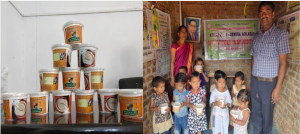
The feeding study revealed that supplementing food of tribal children with 40g of energy dense complementary weaning feed per day for 90 days slightly increased the anthropometric measures like weight and height when compared to non-test group of children. This is an example of preparation of complementary food from locally available food crops with science-backed solutions for nutrition that reflects nutrition-sensitive agriculture.
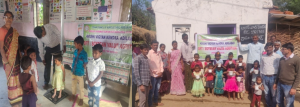
Establishment of multipurpose processing mills
Thus, to increase the consumption of locally grown seasonal crops such as soybean, sorghum and millets by tribal families, the KVK established multipurpose processing mills at 14 remote tribal hamlets under Tribal Sub Plan (TSP) funds given by ICAR, New Delhi. These mills have processing units for wet and dry grinding. Each tribal hamlet in Adilabad has 50-80 families and the units are benefiting over 5000 tribal household members at a project cost of Rs 4.5 lakh and average cost of Rs 30,000 per unit. One farmer is managing the unit in each village and earning an amount of Rs. 2800 to 3500 per month apart from regular farm income.
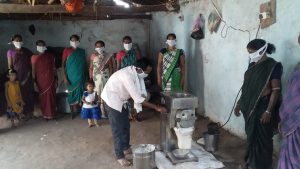
Advantages of multi-processing units in remote tribal Hamlets
- Can process locally grown sorghum, millets, wheat, pulses and other foods for their household consumption
- Benefiting over 1000 households or 5000 household members,
- Reduce the gaps in primary processing infrastructure for sorghum, millets, soybean, red gram, Bengal gram and spices for domestic consumption
- Tribal families need not to go to mandal headquarters or major villages for flour milling or grinding spices like chili and turmeric
- Preparation of varied diets from locally grown foods helped reduce nutritional deficiencies among children and adolescent girls
- Tribal women were trained to produce malted foods, dhal milling and spice powders for income generation.
Table 1: Multipurpose mills at Different Villages in Adilabad 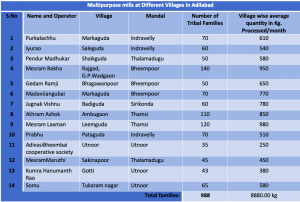
IMPACT
Before establishing multipurpose flour mills, the tribal people had to go to mandal headquarters or nearby towns for milling sorghum, wheat and millets into flour (atta) and rawa for their daily food preparation. With the help of our multipurpose flour mills, they have been able to process their locally grown foods into different products during lockdown without moving out of their hamlets. The mill can also be used for preparation of condiments like ginger + garlic paste, turmeric powder, chili powder etc. In tribal areas, there was no established evidence-based link between agriculture and nutrition before setting up of multipurpose flour mills. After series of trainings, on farm demonstrations and EDP on value addition in millets and locally grown foods, way have been paved for the production of diverse balanced diet from locally grown foods with minimum expenditure or no cost.
Box 3 Challenges in establishing of mill the in tribal hamlets
|
LESSONS
Establishing of multipurpose flour mills in tribal hamlets promotes dietary diversity, reduces food expenses and ensures better nourishment. It also reduces the drudgery and is timesaving compared to use of stone chakki for grinding. Saving of money and time enables women to work more efficiently on farms, which in turn promotes health and higher income.
Promotion of tribal SHG’s for commercial processing of locally grown food crops and selling of desi varieties of Jowar (sorghum) atta, wheat atta, multigrain atta and other ethnic tribal foods is a viable option for promoting value addition to locally grown foods and empowers women.
It also created awareness on preparation of diverse nutritional balanced diets from locally grown seasonal crops for better nourishment of all age groups. The concept of micro food processing enterprise has come in the minds of tribal women for processing and selling locally grown foods. Millet proteins complement soy and legume proteins, and the supplementary foods may be suitable for nutrition intervention programs.
Acknowledgements: The authors would like to acknowledge the support extended by Dr V Praveen Rao, Hon’ble Vice-Chancellor, Professor Jayashankar Telangana State Agricultural University (PJTSAU), Hyderabad, in all extension activities and providing dynamic inspiration. They are also thankful to Dr. Y.G. Prasad, Director, ICAR-ATARI-Zone-X, Hyderabad, for providing TSP funds to KVK, Adilabad, for successful implementation of tribal Livelihood activities.
![]() Er. A. Poshadri, SMS (Food Technology), KVK, Adilabad (Email – poshadri_fst@yahoo.co.in)
Er. A. Poshadri, SMS (Food Technology), KVK, Adilabad (Email – poshadri_fst@yahoo.co.in)
![]() Dr. Y. Praveen Kumar, Senior Scientist & Head, KVK, Adilabad (Email-yadagiri.praveenrao@gmail.com)
Dr. Y. Praveen Kumar, Senior Scientist & Head, KVK, Adilabad (Email-yadagiri.praveenrao@gmail.com)
![]() Dr. G. Shivacharan, SMS (Extension), KVK, Adilabad (Email – shiv4one@gmail.com)
Dr. G. Shivacharan, SMS (Extension), KVK, Adilabad (Email – shiv4one@gmail.com)
![]() Dr. M. Raghuveer, SMS (Crop production), KVK, Adilabad (Email- rmraghu2312@gmail.com)
Dr. M. Raghuveer, SMS (Crop production), KVK, Adilabad (Email- rmraghu2312@gmail.com)
![]() Dr. M. Sunil Kumar, SMS (Horticulture), KVK, Adilabad (Email – sunil0529@gmail.com)
Dr. M. Sunil Kumar, SMS (Horticulture), KVK, Adilabad (Email – sunil0529@gmail.com)
![]() Dr. A. Ramadevi, SMS (Plant Protection), KVK, Adilabad (Email- ramaento33@gmail.com)
Dr. A. Ramadevi, SMS (Plant Protection), KVK, Adilabad (Email- ramaento33@gmail.com)

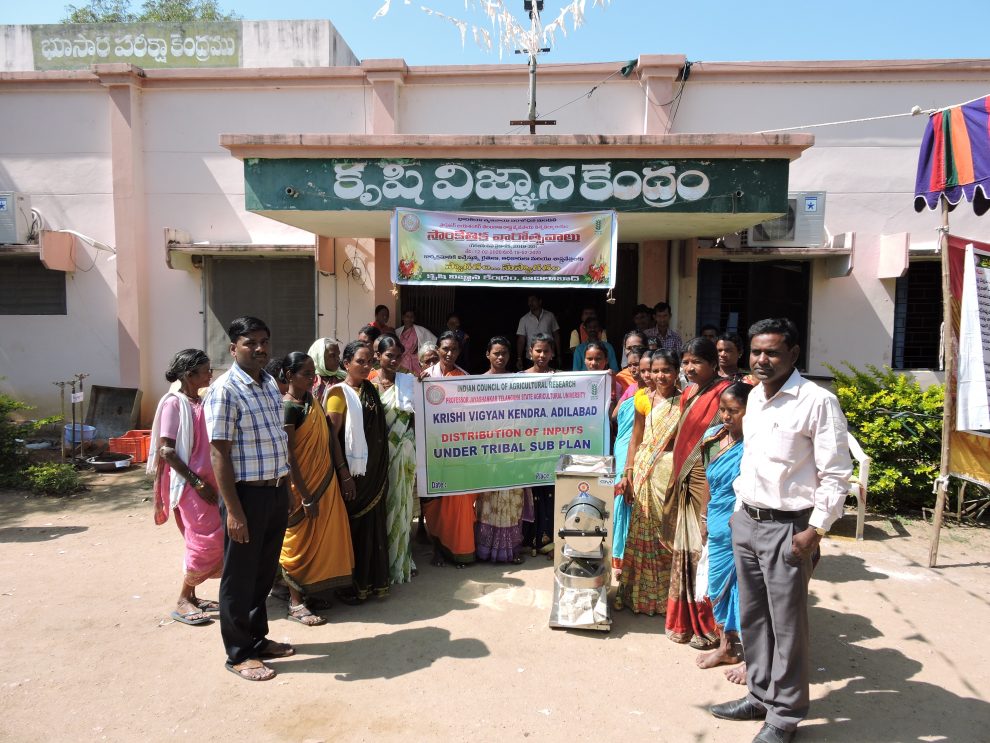
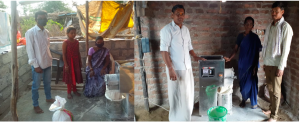

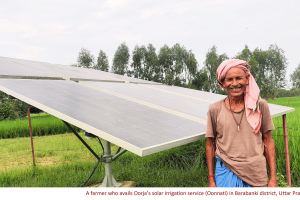
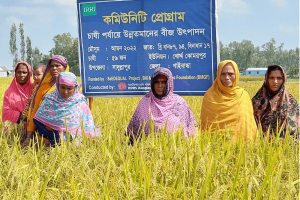
Add Comment